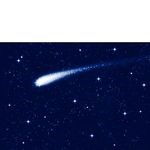A huge meteorite that lit up the Northwest's night sky on Nov. 20, 2008 is front and centre of a new temporary exhibit at the Royal Saskatchewan Musuem.
As the meteor streaked southeastward into Saskatchewan, people from Alberta, Saskatchewan, Manitoba and Montana reported seeing the fireball and hearing the sonic booms.
A week later, a research team from the University of Calgary found the first meteorite fragment on a frozen pond. Eventually more than 1,000 pieces of the shattered object were collected, making it one of the largest accumulations of debris from a single meteor event ever recovered in Canada.
News-Optimist sports reporter Trent Cey tagged along with the researchers as they revealed their discovery to the media, and that story earned the newspaper a Saskatchewan Weekly Newspapers Association better newspapers competition nomination in the Best Research Story category.
The RSM exhibit was made possible through the generous donation of meteorites by brothers Alex and Ian Mitchell. The pieces were found on their farms near Lloydminster, Sask. The celestial object was named the Buzzard Coulee meteorite after the location where most of the debris was found.
"The donation of these meteorite fragments to the RSM and the research that can be done on them will expand our understanding of the history of the universe," RSM director Harold Bryant said.
"Besides responding to the significant public interest in meteors, other celestial bodies and events, the RSM's mandate includes research and education, and the collection and conservation of meteorite fragments contributes to the permanent record of our geological history."
"Meteors leave grownups in awe and shooting stars capture our children's imaginations," Parks, Culture and Sport Minister Kevin Doherty said. "I think this very cool exhibit reminds us of that excitement, while teaching the science behind these extraterrestrial events. Once again, the RSM engages us, helps us learn about our world and contributes to our quality of life."
Founded in 1906, the RSM strives to cultivate interest in and knowledge of Saskatchewan's natural and cultural history through research, exhibits and programs.
The RSM is open from 9:30 a.m. to 5 p.m., seven days a week. Admission is by donation. Go to www.royalsaskmuseum.ca to learn more.




